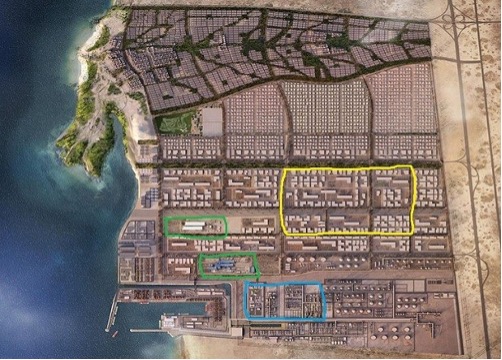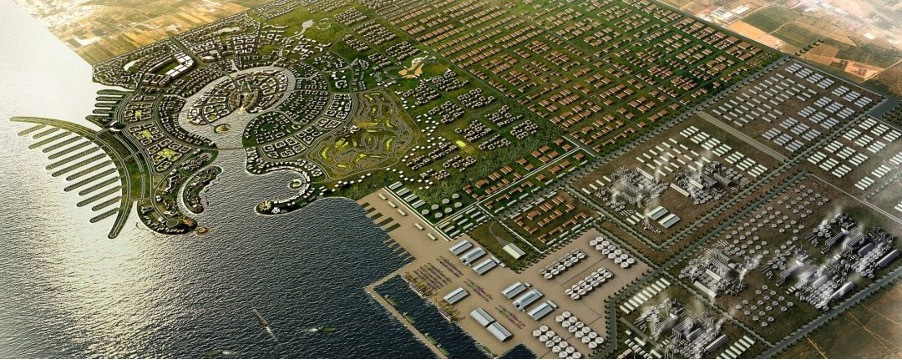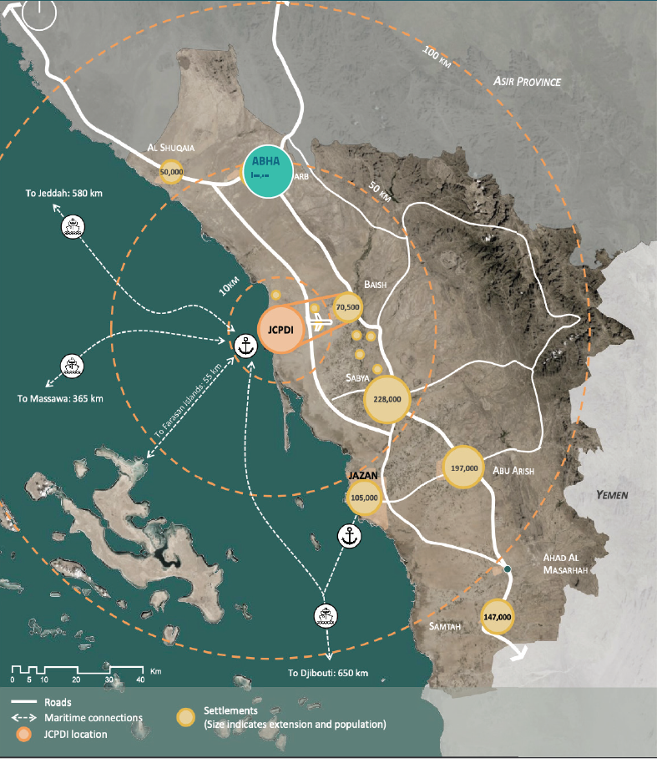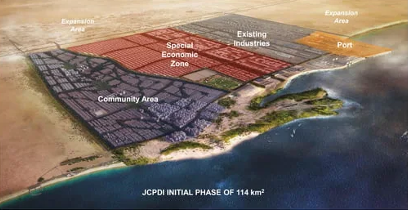
Close

Approach Words: Urban Competitiveness, Urban Livability, Vibrant City
Public Policy Instruments: Financial Mechanism, Organization, Physical Intervention, Planning, Regulatory
The Jazan Economic City (JEC) is a major planned industrial and economic development project in Jizan Province, southwestern Saudi Arabia.1 Initiated in 2006, the project is located 60 km north of Jazan, along the Red Sea coast.2 JEC is designed to stimulate economic activity and serve as a key driver for national and regional economic diversification.3
JEC’s vision is to become a “global industrial and logistical hub”, that promotes economic diversification and regional development in line with Saudi Arabia’s Vision 2030.4 It aims to attract over SAR 100 billion in investments5 and generate substantial employment opportunities in energy, manufacturing and logistics sector.6

Title: Jazan Economic City Master Plan.
Source: Click Here

Title: Arial view of Jazan Economic City developed Master Plan.
Source: Click Here

Title: Jazan Economic City Development synergies and peripheral effect on the neighbor cities.
Source: Click Here

Title: Jazan Economic City zoning.
Source: Click Here
To achieve its vision, Jazan Economic City spans approximately 102 square kilometers, making it one of the largest economic city projects in the Kingdom.7 Key components of the city include:
JEC integrates sustainability through advanced water recycling systems, renewable energy installations, and the use of environmentally friendly construction materials.14 The city’s design incorporates universal accessibility standards, including public transport systems and barrier-free design to accommodate all users.15

Owner/Developer (Public)

Owner/Developer

Consultant/Designer

Contractor/Implementer
The Jazan Economic City project involves multiple stakeholders. Initially, the project was developed by a joint venture between MMC Corporation (Malaysia) and Saudi Binladin Group (SBG), with the Economic Cities Authority (ECA) serving as the primary development facilitator.16 Currently, Saudi Aramco is the principal entity executing major infrastructure and industrial works.17 18 Chinese manufacturing companies and local contractors are also involved in the delivery and investment in JEC.19
The implementation is developed in phases:
As of December 2023, 53 major projects have been completed at a combined value of $2.39 billion.23 The port is operational, and several industrial and residential facilities are in advanced stages of completion.24 JEC is on course to become a strategic center for industry and commerce, contributing to Saudi Arabia’s economic growth and global competitiveness.25
Project Link
Endnotes
N.A.
References